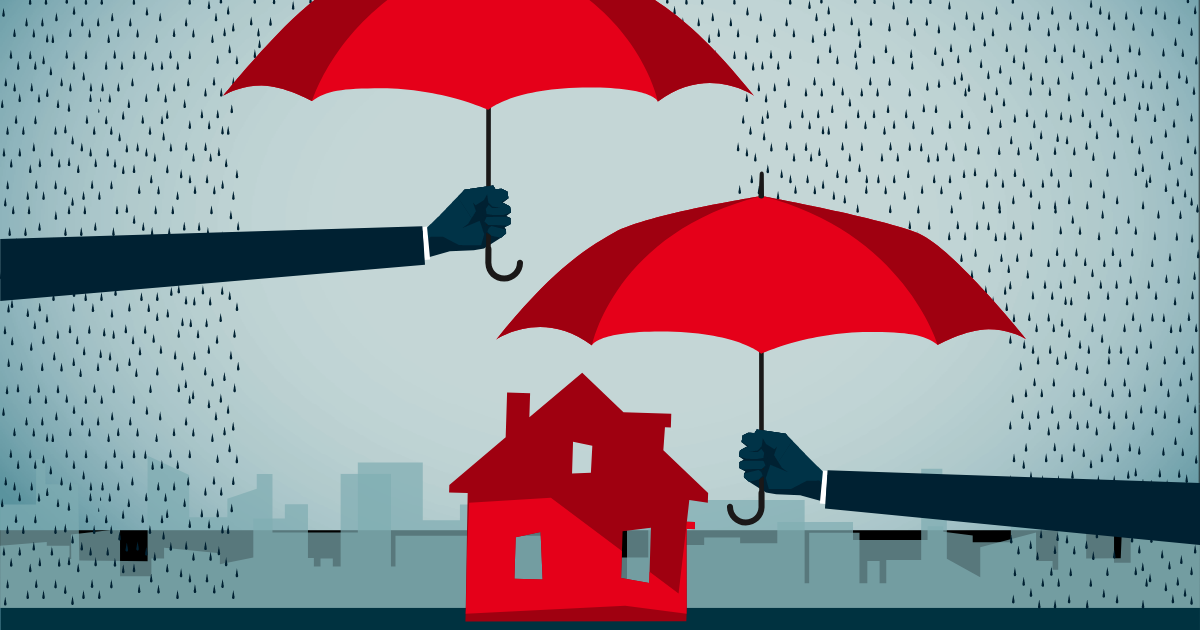
How to Prep Your Household for Harsh Weather
Preparation is Key
True, preparation is important, but knowing what to prepare for in the first place is priority número uno.
People have made big moves, including cross country moves, since the days when Oregon Trail wasn’t an early computer game but a demonstration of real-life obstacles. However, in recent history there has been a boom of remote working opportunities. Widening political lines, rising housing costs, and other factors including a rekindled desire to be close to family have created an environment in which more people than ever7 feel free to make big moves to the states of their choice. Moving is great, and settling into a new state, city, or countryside is an adventure worth embarking on. However, a perhaps overlooked consequence of a major move is getting used to new weather events as well as new threats of natural disasters.
Recently a tornado ripped through my area. Luckily, my home and my friends were alright after the storm. Something hit me while I hunkered down under my stairs with a helmet, my dog, and my husband, who was mad because he’d been mid-cycling, when the “take cover now” warnings began blaring. A friend, a recent transplant to the Lone Star State, texted me asking what to do. I gave her some suggestions and realized that when you make a major move you might need to do some weather-related research. Your friends at Speedy Cash have your back, so our team has put together a great list of resources and suggestions to get you started on your weather preparation journey!
So which weather events should you prep for? Where do you start?
The CDC has a wonderful resource for learning more about weather and natural disasters which breaks down how to prepare and what to do if an emergency event takes place. Once you’ve done some research regarding which events you should be prepared to experience, learn as much as you can5 about staying safe. My friend, for example, knew that tornados happen in this area and knew that you should take shelter. She did not, however, know exactly what shelter should look like in the moment. Because it wasn’t something she was used to, the knowledge she did have was easily lost because of the adrenaline rush. Part of preparation and planning for emergency events is reviewing said plans until they’re ingrained and easy to access when the time comes.
I’m not claiming to be a natural disaster preparation know-it-all, by the way. I know how to behave when a tornado has touched down a few miles away (I grew up in the tip of Tornado Alley), but if a hurricane hits? I wouldn’t know where to start. So where do we start? After figuring out which weather events are common, a focus on personal safety, prepping the essentials, an evacuation plan, as well as plans for protecting personal items and your home should all be considered.
Personal Safety Must Come First
Personal safety, and the safety of your family, is and will always be the number one priority when facing inclement weather. The weather is unpredictable at the end of the day. Of course, there are scientific ways to forecast the weather, and you should always pay close attention to the directions given by local news stations and authorities. However, the weather does weird stuff sometimes, and you can’t rely solely on your personal experience and “how things look” to know exactly how bad an event is going to be. People are shocked, every year, by the scope of damage caused by extreme weather events. Unfortunately, damage to property is not the only shock that is left in the aftermath of natural disasters and major weather events; there are deaths each year associated with everything from cold weather, to flooding, to major windstorms. Keeping yourself and your family safe is the priority when making your emergency plan. That means you need to have your ducks in a row. Have your essentials prepared and be ready and able to evacuate if advised.
Prepping the Essentials
Extreme weather is no surprise, but for some reason many of us think the worst just won’t happen to us. Unfortunately, disaster can strike at any time, and no one is immune. Having the essentials prepared in case of inclement weather or worse a natural disaster level weather event is key to, forgive my pun, weathering the storm. Review your winter storm preparation checklist which can double as a disaster or extreme weather checklist if winter weather is not your main concern. So, what are the essentials?
- Food – enough for three days, shelf stable, easy to prepare
- Water—bottled and enough for each person for three days
- Proper Clothing—layers of clothing and good, outdoor walking shoes
- Emergency supplies—first aid kit, batteries + flashlights, candles + matches, any necessary tools
- Evacuation Plan—a map is a must, multiple routes planned, and a fueled-up vehicle
Spending a little time preparing the essentials can save you valuable minutes when disaster strikes. Even a few moments could be the difference between a good result and a bad result when facing extreme weather. The comprehensive Preparing for Disaster pdf6 available from FEMA is an excellent resource that every family should review together. It’s important to make sure all members of the family, including children, are aware of the family emergency plan including where to meet up if necessary. FEMA suggests that you regularly review, revise, and maintain your plans and emergency preparedness kit.
Of course, not every weather event is an emergency. Each year, winter storms create extremely difficult situations for people across the US. In 2022, as a fun follow up to the massive storms and power outages of 2021, 1.7M customers lost power8 during the winter weather events that took place over the Christmas holidays. Losing power during a winter storm is extremely dangerous for our most vulnerable citizens which means preparation for these events has never been more important.
So how do you prepare for a power outage during the winter? Having blankets, alternate safe heating sources, water and food that can be prepared easily without power or gas are all vital. It’s also a good idea to be familiar with the locations of warming stations and shelters nearby in case your situation becomes unbearable in your house during a power outage. Don’t forget to check on the people nearby such as the elderly who may not feel comfortable asking for help.
Ready to Go
Having an evacuation plan is important, particularly if you live in an area that experiences extreme weather events such as hurricanes or wildfires. Having a plan to meet with family is a key piece of this planning phase, as mentioned previously. Ensure you have a “go bag” which is a bag that is ready for travel in a moment’s notice. The bag should contain essential items you will need for evacuation such as important documents (ideally these are in a safe, fire-proof box at home and you can quickly grab and add to your bag), clothing, non-perishable food, water, and tools such as a flashlight and map. It is also important to keep your car in good working condition and fueled up ready to leave1 if needed, particularly during seasons known for extreme weather or events.
Make a plan regarding your destination in case of evacuation as well. You should know where nearby shelters are, have a family member or friend that you could potentially stay with if needed, and know which routes are safest in case of emergency. Know multiple routes to get to your destination if possible, and always keep a physical map/atlas in the car in case cell phone service and GPS service are disrupted. Don’t wait until the last minute. If local news stations or authorities are warning that evacuations are imminent, get going. Downloading the FEMA app2 is an additional, great step that can keep you informed and provide you with important information such as emergency alerts for your local area during an emergency event.
Keeping Your Keepsakes
During your preparation phase, FEMA suggests creating an up to date, detailed list of your possessions. Knowing what you have is important and collecting photographs of big-ticket items as well as receipts can save you from headaches while working with insurance to replace anything that is damaged. Personal items that are irreplaceable could be packed to take with you during an evacuation, but this should be kept to a minimum. In an emergency, your personal safety is the priority. If you can fit a small item or two that is invaluable to you in your go bag, grab it. Otherwise, rely on your preparation for an insurance claim if it comes to that and know that stuff is just stuff. Personally, I keep one box that has the most important family pictures in it which I could easily grab on my way out if needed.
Getting Your House in Order
Before severe weather hits your home, make sure the structure is prepared to take the harsh conditions. The National Association of Home Builders suggests reviewing your insurance coverage as a first step of preparation.4 Ensure that your policies are up to date and provide necessary coverage for any natural disasters or weather events that are common in your area. If necessary, you can chat with your insurance agent about additional policies and coverages to provide ultimate protection for your home and belongings. Depending on the weather events you experience in your area, there are a few steps you can take to prep your home.
Preparing For the Cold
As previously mentioned, power outages are a cause for concern during extremely cold weather, and you want to be prepared with supplies and alternative sources of heating. However, after addressing personal safety, there are steps to take to keep your home safe and functional in the cold:
- Have food and water reserves that are shelf-stable and easy to prepare in case you are unable to leave your home for an extended period
- Make sure that outside hose bibs are covered and hoses detached
- In some homes, particularly if there is not sufficient insulation, you’ll want to leave faucets dripping
- If the power goes out, you may need to turn the water supply off and let the lines run dry to prevent pipes from freezing3
- Utilize a space heater in the room where you are, and have extra blankets on hand in case the heating unit can’t keep up
- Keep your heat at 60 degrees minimum to help keep plumbing safe
- Have tools ready for snow removal
- Keep extra clothes, food, water, and tools in your car in case you get stuck while out
Preparing For High Winds
One of the big-ticket items that is most vulnerable during high winds is your roof. Make sure to keep your roof and gutters in good condition with regular cleaning and assessment. You’ll want to make sure that your roof doesn’t need any additional sealing or work to prevent leaking and additional damage when the storm blows through. Hiring a professional to help you assess your roof is usually your best bet. If you can’t afford that, keep an eye out for missing shingles from the safety of the ground and clean out gutters with a sidekick to hold your ladder and ensure safety.
Yard items should be secured and tied down4 if you’re unable to store them under a shelter prior to a large storm. Anything that can blow around needs to be secured during extreme weather. I lived many years of my life in the Texas Panhandle where the wind blows like nobody’s business as they say in that area. I’ve seen trampolines land in other people’s yard during a big storm. Not a tornado, by the way, just a big windstorm. If it’s not attached to the ground, it could become a flying hazard to you, others, or personal property. So, tie it down or it might just fly around! If you’re prepping for a hurricane there are additional steps you’ll need to take including boarding up windows.
But What About a Budget?
Most of the items you’ll need to consider while preparing for extreme weather events or natural disasters can be completed for free. You’ll need to do more organizing than purchasing to be properly prepared. However, there are items that would be helpful when curating the perfect preparation plan. Prepping your home and making sure your vehicle is ready to travel if needed will most likely be the largest expenses associated with preparing for weather-related emergencies. If you’re facing major car bills or home repair bills, you may not have funds on hand to take care of those items. If that’s the case, consider an Installment Loan or Line of Credit from Speedy Cash. We always have your back, and we’re here to help when you need access to funds for larger purchases or ongoing projects. You may not need to take out a loan to cover preparation costs, but always create a comprehensive budget if you’re planning to make any major purchases or repairs. As always, make the choice that makes the most financial sense for your situation and make a plan for repayment of any loan prior to application.
Start Early, Don’t Wait
The key to any preparation is to get rolling, right? So, get rolling now! No time like the present. Don’t let the number of items on your to-do list get you down or discourage you from taking action. When you have a lot to do, you can only do it one step at a time. Start by assessing your current plan and the extreme weather events you’re most likely to encounter where you live then utilize the tools and resources in this blog to craft a plan and a to-do list. One at a time, mark those items off your list. Remember, Speedy Cash is here to support you, so if you have any financial hurdles to cross while working on your emergency and inclement weather preparations, contact us!
Sources:
1Progressive Website How to Prepare Your Home for Severe Weather Retrieved from: https://www.progressive.com/lifelanes/household/prepare-for-severe-weather/
2Ready.gov (2022, November 17). Low and No Cost Preparedness Retrieved from: https://www.ready.gov/low-and-no-cost
3Scott Dance and Amudalat Ajasa (2022, December 20). 4 Things to do Now to Prepare Yourself and Your Home for Extreme Cold Retrieved from: https://www.washingtonpost.com/weather/2022/12/20/how-to-prepare-extreme-cold-power-outages/
4National Association of Home Builders Protect Your Home from Severe Weather Retrieved from: https://www.nahb.org/other/consumer-resources/disaster-preparation-and-recovery-resources/Protect-Your-Home-from-Severe-Weather
5Centers for Disease Control and Prevention (2022, December 22). Natural Disasters and Severe Weather Retrieved from: https://www.cdc.gov/disasters/index.html
6Fema.gov (2004, August). Preparing for Disaster Retrieved from: https://www.fema.gov/pdf/library/pfd.pdf
7Deane Biermeier and Samantha Allen (2022, November 2). 10 States People Are Fleeing and 10 States People Are Moving To Retrieved from: https://www.forbes.com/home-improvement/features/states-move-to-from/



